#The Guerilla is a Poet
Explore tagged Tumblr posts
Text
Hate it when fandom calls Bheem, Protector of the Gonds, the Shepherd of his tribe, son of warriors, guerilla mastermind, brilliant tactician, master of disguise, fluent speaker of (at least) 3 languages, extraordinary dancer, soulful singer, poet, inspiring leader, botanist, healer, automobile mechanic, a "himbo" or "pure of heart, dumb of ass." No! The only thing Bheem lacked was a formal education and knowledge of the English language and it only BARELY held him back. This man fooled ruthless, brilliant undercover cop Rama Raju for months! When Jenny took him to her house and told him how the second gate only opened after the first one closed, Bheem did not actually understand a single word that she said, even though she handed him the entire security details in a silver platter! HE FIGURED IT OUT ON HIS OWN THROUGH THE SHEER POWER OF HIS OBSERVATION SKILLS, THIS BRILLIANT MADLAD!
If anyone is the dumbass in the relationship, it's RAM
Ram: Here is my super convoluted and complicated plan of achieving Indian Independence that involves beating up and arresting 894949303 of my own people. Every day, I kill more and more of my soul and spiral deeper into depression and self-harm. I am practically suicidal at this point. The plan has made zero progress for the past 4 years
Bheem: Haha, wild animals go brrrrr
Tell me, who is the dumbass now?
#rrr#rise roar revolt#komaram bheem#komuram bheem#alluri sitarama raju#rama raju#incorrect quotes#original post#lol#desi tumblr#desi tag#desi#desiblr#india#meta#ram charan#nt rama rao jr#tollywood#ss rajamouli#rajamouli#jenny#alison doody
43 notes
·
View notes
Text
I've never understood Scottish dwarves. Sure, they have the Highlands and a steotyplically warrior culture, but dwarves are also miners. They're craftsmen and poets. They use guerilla tactics and keep in their stone keeps, as well as engage in open battle, but they have no cavalry. They have complex naming systems and honour guests.
Dwarves are obviously welsh.
51 notes
·
View notes
Text
YOU DO NOT EMBODY FAILURE (by Roger Felix Salditos, in memory of Edward Oliver L. de la Fuente, martyred on Abril 20, 1984)
How many more homages Must we gather for you In the field of painting Poetry and song For your whole life Is a canvas Of an exemplary Revolutionary A composo A novel Of devotion And treachery Of selflessness And bondage A novel of the comings and goings of a people’s guerilla Of a teacher, troubador Poet and organizer Which ended— Not in tragedy For you do not embody failure In this struggle You are part of the thread Of longspun chronicles unraveling the laws of change, of historical materialism that you speak of, and the clash between metaphysics and dialectics, of the masses who are the makers of history that will be told to the new generation in their songs composos of liberation True freedom.
2 notes
·
View notes
Text
Pretti Emage Out With "Young And Reckless" Dive headfirst into the pulsating heart of "Young And Reckless," where Pretti Emage, a.k.a. Zayah Nicole Riley, conjures a tempest tucked in beats and bars that refuse to bow down or grow old. There’s something almost mythical in her voice—a modern siren song laced with defiance and draped in the sun-soaked bravado of Tampa Bay. https://open.spotify.com/track/3tBj5WJtOC8TDEh0fMVYfq The track itself is an audacious dance on the tightrope of youth; think less walking, more cartwheeling with no net below but only sky above. Pretti doesn't just flirt with musical blasphemy by merging whiplash-inducing rap flows with hummingbird-delicate melodies—she marries it, unabashedly declaring herself maid-of-honor at every crossover genre's wedding. Every syllable spins yarns about untamed freedom—the reckless abandon of running through life’s corridors without knocking on doors or apologizing for cracked floors. Here stands Pretti Emage: part poet, part guerilla musicianship goddess firing arrows dipped in raw euphoria and resilience syrup. [caption id="attachment_56008" align="alignnone" width="2000"] Pretti Emage Out With "Young And Reckless"[/caption] To experience "Young And Restricted" is to inhale deep lungfuls of what feels like sonic liberation theory taught by someone who writes hooks that could catch clouds if you sang them high enough. To describe this single as merely music would be akin to saying fireflies are just bugs—they light up small worlds under vast skies! With verses strung delicately across tireless threads spun from endless summers and roller coaster springs explored during zest-drenched youths drying out into autumnal ruminations—not purely nostalgic because every note promises tomorrow even when barreling past midnight’s encore demand. Let your ears feast then—no reservations needed here—for we’re not at any table long set before us; we’re setting it aflame together at Pretti Emage’s riotous banquet. Follow Pretti Emage on Website, Facebook, Twitter, YouTube, Instagram.
#Music#PrettiEmage#PrettiEmagediscography#PrettiEmagedropsYoungAndReckless#PrettiEmagemusic#PrettiEmagemusicalartist#PrettiEmagemusicalband#PrettiEmagenewsingle#PrettiEmageOutWithYoungAndReckless#PrettiEmageprofile#PrettiEmagereleasesYoungAndReckless#PrettiEmageshareslatestsingleYoungAndReckless#PrettiEmagesinger#PrettiEmagesongs#PrettiEmageunveilsnewmusictitledYoungAndReckless#PrettiEmagevideos#PrettiEmagewithYoungAndReckless#PrettiEmageYoungAndReckless#YoungAndReckless#YoungAndRecklessalbumbyPrettiEmage#YoungAndRecklessbyPrettiEmage#YoungAndRecklessfromPrettiEmage#YoungAndRecklessPrettiEmage
0 notes
Text
The Manifesto of Futurism (Italian: Manifesto del Futurismo) is a manifesto written by the Italian poet Filippo Tommaso Marinetti and published in 1909.[1] Marinetti expresses an artistic philosophy called Futurism that was a rejection of the past and a celebration of speed, machinery, violence, youth and industry. It also advocated the modernization and cultural rejuvenation of Italy.
A creed, also known as a confession of faith, a symbol, or a statement of faith, is a statement of the shared beliefs of a community (often a religious community) in a form which is structured by subjects which summarize its core tenets.
French Ajami Issa Credo Masculinité
Rejection of Past Africa for Romance Studies and Greco-Grigory Science
Construction Trust Fund Insurance Business Model
Real Estate Identification
Distorted Sensory Play for Wings Development
Sociobiology-Socioeconomic Status-Sociocultural Theory of Development
Gymnastic Rings
Olfactory Arts
Grey-collar Working Class Game Theory Network
GABA Hegemonic Masculinity Settlement Colonization
Psychology
Age 16 Passage of Living Like Your Father Is Dead To Become A Man
Gambling and Bankroll Magement
Gastronomy
Collagen Sports Science
Vice Script
Sevette
Military Equipment
Fertility
Why Our Version Of French is Vulgar And Is Classified As An Art History Language (Kinaesthetic Learner Poets)
Cigar Dress Code
Keystone Habits
Wolves
Authors Of Scientific Theory
Heritage Assets
Mastering Dynamic Plank, Dynamic Reverse Plank, and Dynamic Hollow Hold
Bioeconomy (BioTechnology Central Hedge Fund-Game Theory Offshore Master’s Exchange Program)
Offshore Aquaculture Predators
Guerilla Fitness Routine
Orthotropics (Jaw Contouring, Mewing, and Masseter Silicone Chewing)
Cat Owners
ISSA
0 notes
Photo

Please join us Friday for closing night! Join Goodyear Arts + Guerilla Poets and donate to our Doomsday Book Drive. We are seeking paperback, staple-free poetry book donations for the adult Mecklenburg Detention facility and children's and YA books representing diverse characters, authors, and illustrators to stock Little Free Libraries. #cltart #704 #performanceart #doom #doomsdayslayer #doomsday #doomsdayclock #doomsdayandnight #clt #charlottevegans #goodyeararts #campnorthend — view on Instagram https://ift.tt/m7jL2Cx
0 notes
Text
i totally see the value in reading these poets, but i was wondering what the value is in guerilla reading palestinian poets and not paying them? (being genuine)
I know it’s not much in the face of everything but I have been finding hope & resilience in palestinian poetry these past few weeks and I created a google drive file of poetry collections by palestinian poets that I will keep updating as I keep on reading. I also recommend checking out @fiercynn’s palestinian poets series for more poets + poetry available online
22K notes
·
View notes
Text

Poetess Tori Lutz powerful interpretation of my #poem #AnUnparalleledDuet from Section One #innerquestions in #innervisions. Visit Amazon.com or Barnes & Noble to order #innervisions & dm Tori to order her gorgeous collections of poetry #schoolyardcrushesandprozacprescriptions ; or check out the famous Miami bookstore #booksandbooks to purchase.
And, TONIGHT hop on Zoom for Tori’s writing workshop #poetsanonymous w. The Word is Write7pm ET 💖✍🏻📚 🎙️
_____
#mysterious #miamipoets #nycpoets #community #esscollection #producers Tell Tell Poetry Read or Green Books David Wayne Fox Photography Guerilla Poets
#authors#poetry collections#writers and poets#poetry#poem#nyc#miamibeach#communities#community#producers
0 notes
Text
32 (Technically 36) Albums We Loved That Happened To Come Out in 2022

Cake image courtesy of Oren Ambarchi’s Shebang album art
As more music is being released than ever, it can be hard to pick out trends or even commonalities among our favorites. A post-pandemic world that saw a more full-fledged return to live music and in-person collaboration certainly influenced the records released last year, but from our eyes and ears, it was the artists that ignored physical boundaries, not taking for granted their ability to create, that put out the albums that moved us most. From “solo” records that were truly synergic to songs that work towards toppling the powers that be, innovative producers to stalwarts of indie rock, here are 32 (technically 36) albums that came out last year that we truly loved.

700 Bliss - Nothing To Declare (Hyperdub) / Moor Mother - Jazz Codes (Anti-)
Prolific poet and musician Camae Ayewa, who records as Moor Mother, released two more albums in 2022 that explored genres new and old. On Nothing To Declare, the debut LP from 700 Bliss, her project with DJ Haram, the two make a formidable team. Haram combines clattering beats with Moor Mother’s forceful delivery and incomparable flow, as the duo traverse techno, noise, and sound collage worlds. You’ve never heard Moor Mother in front of instrumentals like this, spitting words that are equal parts deftly serious and humorous. She pays tribute to choreographer and anthropologist Katherine Dunham on “Anthology”, declaring that Dunham “danced America on stage” over DJ Haram’s hard techno beat, a melding of tenets of Black music. On “Candace Parker”, which features breakbeats from Palestinian producer Muqata’a, Moor Mother laments, “They rape our mothers while y’all just record.” There’s an urgency to Nothing to Declare, manifested in Special Interest’s Alli Logout screaming, “I’m a motherfucking agitator!” on “Capitol” and Moor Mother’s cinematic lines about guerilla warfare against billionaires and imperialist overloads on the trap-inflected “Discipline”. Yet, even 700 Bliss know that they can be tongue-in-cheek, hilariously on interlude “Easyjet”, a facetious conversation featuring two people making fun of Moor Mother’s vocal tendencies and DJ Haram’s penchant for percussive chaos. It’s a welcome break on an album whose main question appears in the final track: “How much more can we take?”
Jazz Codes is Moor Mother’s second solo album for Anti-, a companion piece to last year’s great Black Encyclopedia of the Air. Like Nothing to Declare, it’s chock full of collaborators, but this time, Moor Mother plays the role of ethnomusicologist, juxtaposing rap, singing, and scholarly spoken word interludes to explore the history of jazz and its descendants. “Dance through the trials of my father,” Moor Mother raps on opener “UMZANSI”, where Mary Lattimore’s harp trickles below horns and footwork-esque drums. Interpolating free jazz and quiet storm R&B and referencing boom bap and juke, Jazz Codes, like the genre it’s named after, reveals new truths after every listen. Moor Mother’s “MEDITATION RAG” is somewhat of a mission statement, her wish to embed herself in “Sun Ra halo, CHAI Congo, Mississippi to East Texas,” in efforts to reclaim the Black music referenced on both this album and Nothing to Declare. Fatboi Sharif groans, “You took the blues away from me” on “BLUES AWAY”; the album’s thematic climax, “THOMAS STANLEY JAZZCODES OUTRO”, places the academic Stanley over an instrumental from Irreversible Entanglements. Jazz should become code for sex again, he posits, rendering something that was once abstract to be again physical and tangible. - Jordan Mainzer
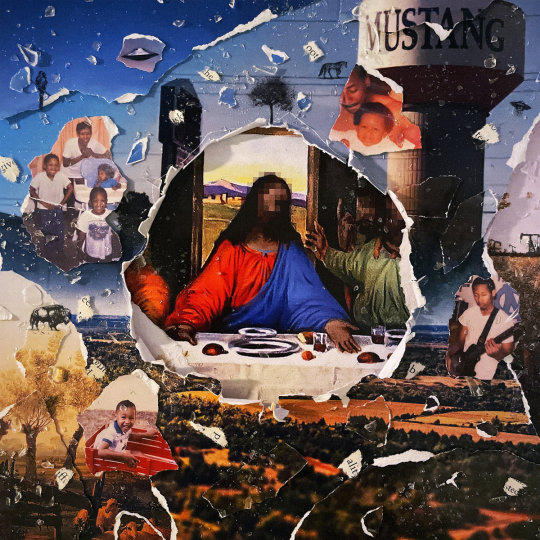
Bartees Strange - Farm to Table (4AD)
Bartees Strange has had an exciting few years, and Farm to Table, the follow up to his excellent debut, only adds to the thrill of his ascent. Strange bends indie rock to fit the album’s vision, from the bright horns on “Heavy Heart” to the electronic flourishes of “Cosigns” and “Wretched” and even the mingling of home audio clips and the gentle fingerpicked guitar of “Black Gold”. Lyrically, the album wrestles with duality: of celebration and grief, home and touring, the comfort of family and the unknown of charting your own path. Strange takes what worked so well on Live Forever and digs deeper, continuing to show off his ability to world-build, which really is all you could want from an innovative artist. - Lauren Lederman

Beyoncé - Renaissance (Parkwood Entertainment/Columbia)
“Renaissance, purportedly the first installment of a trilogy of albums, celebrates Black and LGBTQ+ music and the judgement-free zones they honor. Representative of Beyoncé’s state of mind during the pandemic, it exemplifies her self-love and desire to break free in a time of isolation. And of course, it’s full of braggadocio and skill with the research and credentials to back it up.”
Read the rest of our review here.
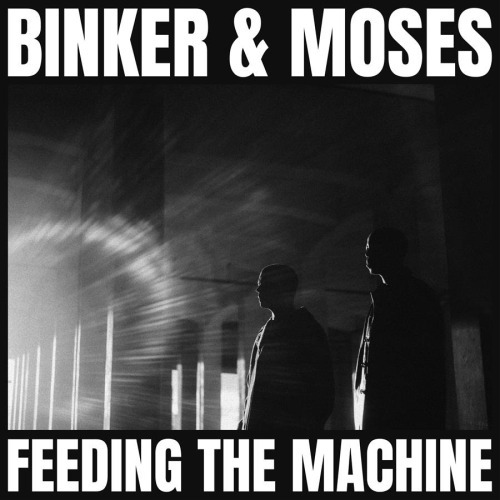
Binker & Moses - Feeding the Machine (Gearbox)
“For their new album Feeding the Machine, the saxophone and drums duo of Binker Golding and Moses Boyd brought their live partner to the studio to add tape loops and electronics to the ingredient list. The result is a major sonic shift, feeding their improvisations through machines, Luthert’s modular synthesis reordering acoustic tracks and drums in a way that’s so distorted it doesn’t even sound acoustic. From the opening moments of ‘Asynchronous Intervals', though you recognize Golding’s saxophone, echoing loops clue you into the sea change. This is different, and it’s here to stay.”
Read the rest of our review here.
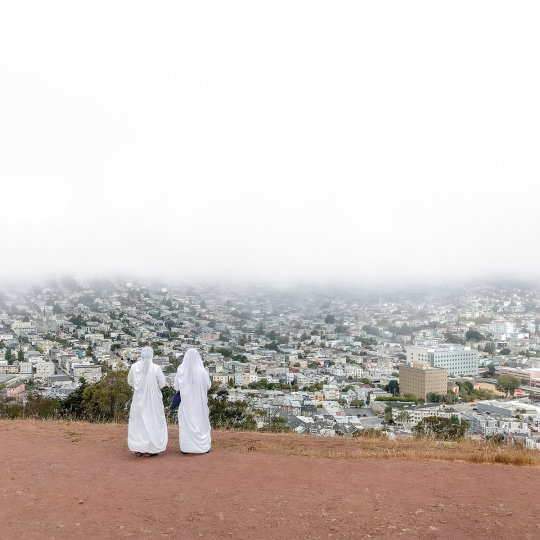
Death Cab For Cutie - Asphalt Meadows (Atlantic)
It’s not that I had given up on Death Cab for Cutie. The stalwart indie rock band has been cranking out albums for years, but what was it about Asphalt Meadows that struck me more than their other recent releases? A five-minute, mostly spoken word track. “Foxglove Through the Clearcut” gives us the contemplative lyrics we come to expect from Benjamin Gibbard but packaged in a way that serves the slowly unfolding story until it reaches its guitar solo crescendo. And I realize that this is the element that’s drawn me back fully into Death Cab’s orbit. The album feels a little rougher around the edges, the guitar fuzzier in moments, not afraid to get a little sharp, which feels apt after the last few years. Asphalt Meadows captures a reflection of our recent post-lockdown history and the urgency of trying to make sense of where we go next. “Now it seems more than ever there’s no hands on lever,” Gibbard sings, a fitting statement on an album that isn’t afraid to dive into the unknown of our current moment. - LL

Florist - Florist (Double Double Whammy)
“The idea of a person who has faced heartbreak or grief retreating to solitude to create art is oft-romanticized, perhaps to a fault. Emily Sprague has certainly created masterful albums by herself, whether the ambient music released under her own name or Emily Alone, a solo album released under the Florist moniker following her mother’s death and a move out west. But in June 2019, Sprague moved back to New York and rented a house in the Hudson Valley with the band’s original lineup: Jonnie Baker, Rick Spataro, and Felix Walworth. They’d spontaneously record their instruments beside their surrounding natural woods during a hot and rainy summer, the first time they’d ever recorded this way, for this long. The result is Florist’s latest self-titled record, a reinvention of sorts, and one that perhaps shows Sprague and the music listening public that great art can come out of reflecting on troubling times with a loving community by your side, too.”
Read the rest of our review here.

Immanuel Wilkins - The 7th Hand (Blue Note)
“Wilkins’ lack of fear in not just challenging the listener but purposefully bypassing their understanding is what makes The 7th Hand a monumental album. His debut Omega was just as socially conscious, a record about the Black experience in America. But The 7th Hand breaks the rules while establishing some of its own. The first track, 'Emanation', ends in the middle of a vamp. Each track from then on out relates to the next by a triple meter, going down and then back up until the free 'Lift'; if, in Biblical terms, 6 represents man and human weakness, 7 represents divine intervention, a concept represented at first by an instrument and later by the freedom of the album’s final track.”
Read the rest of our review here.

Jeremiah Chiu & Marta Sofia Honer - Recordings from the Åland Islands (International Anthem)
“Independent of its context, the album is a pleasure to listen to, one that allows you to create your own associations with the sounds. Warbling synth harmonics, birdsong, and crunchy noises like a train in the rain pervade opener ‘In Åland Air’ (which features processing from Tortoise’s John McEntire). ‘On the Other Sea’ is reminiscent of Boards of Canada’s penchant for finding eerie atonality in otherwise beatific timbres, with its wind chimes, synths, and horns. ‘Rocky Passage’ creaks along, full of noises like hearing a woodpecker on a hike, unable to spot the bird cascading up and down its tree. The synth arpeggios on ‘By Foot By Sea’ sound, of course, like the up-and-down current of waves. But I find the album even more rewarding when you do know the stories behind the songs, the way the instruments try to emulate nature. Honer’s viola leads my favorite, ‘Snåcko’, a track named for the island next to Kumlinge, as keys circle in the background, purportedly inspired by the feeling of your eyes slowly adjusting to multi-colored moss in the forest of the island.”
Read “Press Record”, out interview with Chiu and Honer.

Kevin Morby - This Is A Photograph (Dead Oceans)
“The last few years have given us a sense of perspective, perhaps even urgency when faced with the prospect of our own mortality. Yeah, it happens when you’re surrounded, whether in person or even just on the news, with so much death. For Kevin Morby, the illumination happened before the pandemic. His father collapsed at the dinner table and had to be rushed to the hospital in early 2020. Though his dad ended up okay, that night, in order to distract himself from worrying, he flipped through old family photos. He found a picture of his father, carefree and shirtless, sitting in the front yard. But it wasn’t just a photograph: It was a moment, captured, a document of hopes, moods, dreams, and fears at a point in time. Morby decided to travel to Memphis and chase some more ghosts. What resulted from that decision is This Is a Photograph, his best album yet.”
Read the rest of our review here.

Lucrecia Dalt - ¡Ay! (RVNG Intl.)
Following incredible albums like 2018′s Anticlines and 2020′s No era sólida, Berlin-based experimental musician Lucrecia Dalt released her most thematically ambitious album to date with ¡Ay!, but you wouldn’t even know it. Recalling growing up in Colombia and, generally, the music of the Latin American diaspora, ¡Ay! is also a vague sci-fi story about an alien named Preta visiting Earth and trying to figure out humanity. Cleverly, as much as Dalt sings from Preta’s perspective, she puts us in the shoes of those traversing the unknown, and we spend most of the album simply marveling at the sounds entering our ears. Beautiful and strange, opener “No tiempo” features wind instruments in lockstep with percussion and Dalt’s singing. Lina Allemano’s muted trumpet Mickey Mouses with Edith Steyer’s clarinet on “La desmesura”. “Atemporal” sports warped, circus-like drums and horns. Independent of the album’s aims and context, ¡Ay! is an undoubtedly playful expression of Dalt’s musical language. She whispers, “No obedezco a tu verdad lineal” on “El Galatzó”, winking alongside Isabel Rößler‘s double bass, flute, synthesizers, and wooden stick bongos; “I don’t obey your linear truth,” goes the line in English, like if the aliens from Arrival learned how to play bolero. - JM
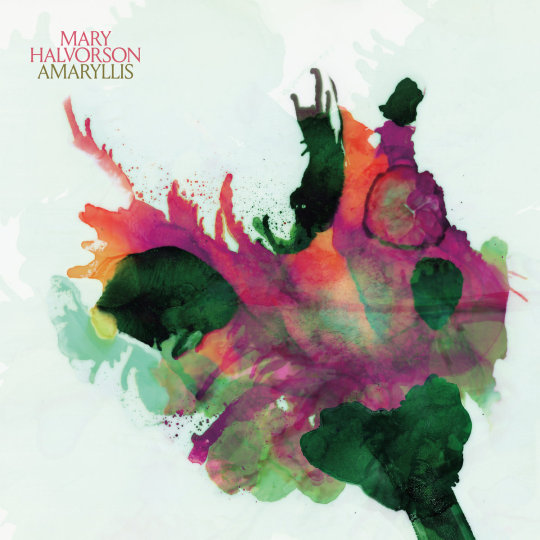
Mary Halvorson - Amaryllis / Belladonna (Nonesuch)
In May, jazz composer and guitarist (and MacArthur Grant winner) Mary Halvorson released two albums that couldn’t sound more different, yet have tying threads in personnel and spirit. The first, Amaryllis, is a six-song suite for the largest ensemble for which Halvorson has ever written. Produced by Deerhoof’s John Dieterich, it features Patricia Brennan (vibraphone), Nick Dunston (bass), Tomas Fujiwara (drums), Jacob Garchik (trombone), and Adam O’Farrill (trumpet), as well as The Mivos String Quartet on three of the songs. “Night Shift” is slinky and sneaky, Halvorson’s arpeggiated guitar bubbling beneath a bed of bass, drum, vibes, and horns, Brennan and O’Farrill taking the song out with solos. Her and Dunston’s lines tangle with the horn section on the title track, propelled by Fujiwara’s forward-marching drums and melodies and countermelodies. The Mivos Quartet introduces “Side Effect” with string harmonics, previewing Brennan’s kickstarting vibraphones that send the band into a swaying, funky jam. Equally impressive are the songs that are groove-less and strange either partially or for their entirety, like the woozy “Anesthesia” and the squeaking, atonal “Hoodwink”.
It’s those experimental tunes that mirror Belladonna, five compositions written for Halvorson and the Mivos Quartet, representing another first for Halvorson: her first music written for a string quartet. Her parts improvised, the music is abstract and expansive, filled with contrast. On “Nodding Yellow”, the pulses of Halvorson’s electric guitar represent a stark difference with the lushness and pluckiness of the strings. She creates worlds of sound on “Moonburn” and “Flying Song”, with the expressive, upward bends of her chords. And on the stunning, 10-minute “Haunted Head”, the string parts take their turn one by one, washing over each other with varying degrees of dissonance and fluttering flourishes. A microcosm for both albums, the players are given space to take their own journey, but in tandem. - JM

Matmos - Regards/Ukłony dla Bogusław Schaeffer / The Soft Pink Truth - Is It Going To Get Any Deeper Than This? (Thrill Jockey)
You can always count on Drew Daniel to be adventurous. Making an album constructed from washing machine noises? Check. Asking 99 musicians to contribute to an album with anything they wanted, but it had to be at 99 bmp? You bet. Making dance covers of black metal songs? Absolutely. This year, two albums he released, one with Matmos and one his ever-burgeoning solo project The Soft Pink Truth, were again based on very specific concepts, toeing the line between asking abstract, academic questions and answering them with twisted good times. For Regards/Ukłony dla Bogusław Schaeffer, Matmos were given access to the entire catalog of the Polish electronic artist after whom the album was named, encouraged to do whatever they wanted with it. With some trusted collaborators in hand, they bent the existing material into something entirely new, anti-ASMR anthems for the avant garde. Rubbery vocals, drippy synths, honking horns, and mousy strings allude to the work Schaeffer did for orchestras as much as his own strange worlds. Yet, Matmos don’t want us to listen for clues. “If All Things Were Turned to Smoke / Gdyby wszystko stało się dymem” takes harp and musique concrète from Schaeffer’s 1970 composition “Heraklitiana”. As electronics from Horse Lords’ Max Eilbacher and harp from Úna Monaghan layer on top of the source material, our desire to pick apart where the text ends and the composition begins leaps out the window.
The Soft Pink Truth’s Is It Going To Get Any Deeper Than This? attempts to answer a much more obtuse question that was once posed by a woman at a club to one of Daniel’s DJ friends, and does so through the peaks and valleys of compositions and musical expressions of queer sexuality. The poolside funk of “Deeper” leads into the chirpy goth club music of “La Joie Devant La Mort”, Xiu Xiu’s Jamie Stewart building off of a sentence in French by philosopher and erotica author Georges Bataille. The song, and the album in general, is fun because of, not in spite of, how unabashedly dramatic it is. Wye Oak and Flock of Dimes’ Jenn Wasner gets her diva moment on “Wanna Know”, cooing, “I just really wanna know / Is it going to get any deeper than this?” over an earworm house instrumental. Nate Wooley’s muted trumpet buoys “Moodswing”, which opens with a champagne cork pop and later falls into broken glass. It’s a reminder that with every celebration comes the potential for shards, a reminder to live fully in the moment, to go deeper when you can. - JM

MUNA - MUNA (Saddest Factory)
MUNA has always had an uncanny ability to spur deep emotions in the compact form of a pop song, and their self-titled third release only gives them more room to expand their sound. Part of the band’s power comes from their celebration of queer joy and love, to unabashedly be themselves. If it’s heartbreak, they embrace it with a welcoming sincerity. A crush is giddy and unapologetic. “There’s nothing wrong with what I want,” vocalist Katie Gavin asserts. Their broader sound brings the band to new heights. The glitchy vocals of “Runner’s High” make the break-up song feel jagged in the way it feels to be dancing under a strobe light. The country-tinged pop of “Kind of Girl'' adds a soaring optimism to finding yourself. They’re the band that can get Phoebe Bridgers to embrace her pop side on the sparkling, joy-filled ode that’s “Silk Chiffon”. - LL

Nilufer Yanya - PAINLESS (ATO)
“Until you fall, it’s painless,” sings Nilufer Yanya on “shameless”, and it’s a through-line you can find over and over again on PAINLESS. Yanya explores different dimensions of heartbreak on the album, and each song unfolds into its own sonic world. “L/R”’s marching drum beat pairs perfectly with the almost staccato delivery of her lyrics as she rearranges sentence structure, which then evolves into the more intimate lush vocal of “Shameless”. The album is filled with moments like these, and Yanya perfectly constructs an album where each song offers something engaging and unexpected. - LL

Nina Nastasia - Riderless Horse (Temporary Residence)
“Riderless Horse was produced by Nastasia, Steve Albini, and Greg Norman, recorded at a house in upstate New York. By the end, you realize it’s an empowering album for Nastasia; as much as she feels ‘sadness and guilt’ the process of writing and recording an acoustic album that features only her showed her how powerful she could be on her own.”
Read our preview of Nina Nastasia’s opening set for Mogwai at Metro.
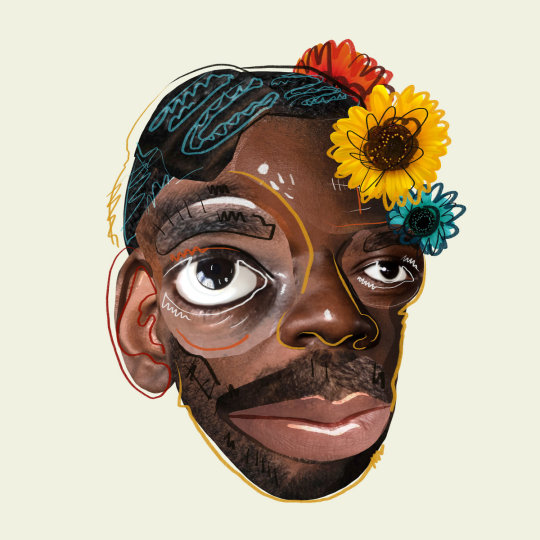
NNAMDÏ - Please Have A Seat (Secretly Canadian)
The thrill of a NNAMDÏ album is that you never know what you’re going to get, but you know it’s going to work. A polymath and Chicago music scene hero, NNAMDÏ’s latest album shows an artist who’s consistently upping his game. Constantly surprising, NNAMDÏi’s skill as a musician and lyricist means you know he’ll pull off any left-field flourish: intricate math rock guitar, gentle falsetto, frenetic percussion, and even the untamed instrumentals he explored on his album KRAZY KARL all appear here. Fans know this, and Please Have a Seat is a perfect introduction to any newcomers. Pull up a seat, get to know the album, and you’ll find yourself also asking: What can’t Nnamdi do? - LL
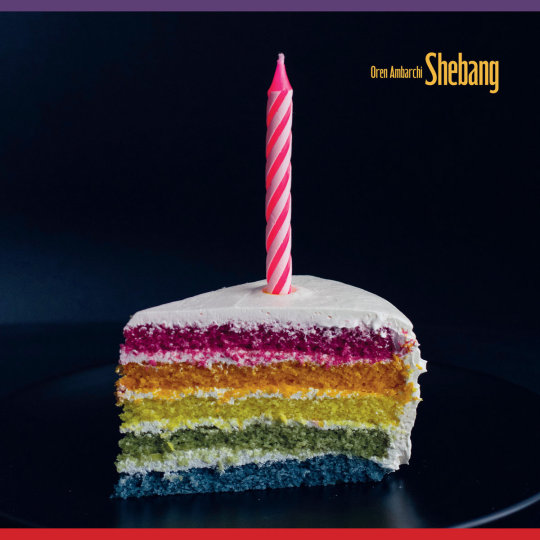
Oren Ambarchi, Johan Berthling, & Andreas Werliin - Ghosted / Oren Ambarchi - Shebang (Drag City)
Prolific guitarist Oren Ambarchi released two records this year, one with bassist Johan Berthling and drummer Andreas Werliin, and a solo record. Ghosted, as we wrote when interviewing the trio earlier this year, is “comprised of four numerically titled tracks that build in different ways. ‘I’ sports a Latin groove, shaky percussion, and spindly bass, Ambarchi’s guitar adopting organ-like tones. ‘II’ is lighter in timbre and more spacious and minimal, its circular rhythms increasing in volume instead of in groove. ‘III’ is the longest track on the album at over 15 minutes, a mélange of sprawling guitar drone textures. And ‘IV’ is a spritely, to-the-point slow-paced jazz tune, with melancholy swirls of guitar and deep bass.”
Shebang, Ambarchi’s solo record, features contributions from Berthling as well as Chris Abrahams, BJ Cole, Sam Dunscombe, Jim O'Rourke, Julia Reidy, and Joe Talia. Like Quixotism and Hubris, it’s a single piece divided into movements, each person recording individually as Ambarchi fit their contributions together like a puzzle, giving each player a time to shine. Though Ambarchi himself introduces the piece with gorgeous, sparkly picking, he eventually gives way to the other constant throughout, Talia’s drumming. Making space for, in order, Dunscombe’s bass clarinet, Cole’s off-kilter pedal steel, Abrahams’ inimitable piano, Berthling’s steady upright bass, Reidy’s ping-ponging 12-string guitar, and O’Rourke’s sharp modular synths, Ambarchi’s always beneath the surface. Whether contrasting Cole’s textures with rubbery synths or Abrahams’ propulsive notes with synaptic blasts, Ambarchi reminds us of the celebratory nature of collaboration, even when you’re not in the same room. - JM
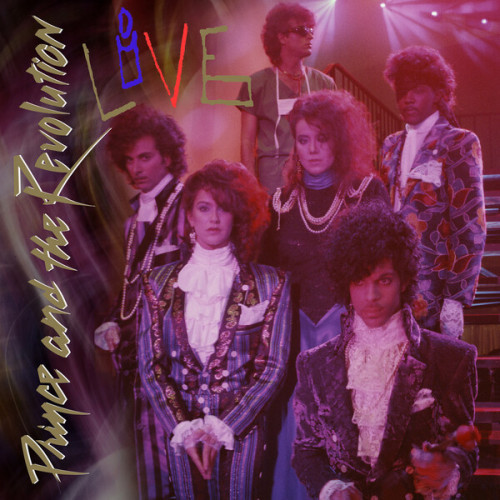
Prince & The Revolution - Prince & The Revolution: Live (Remastered) (Legacy)
“Syracuse, New York, March 30th, 1985. Jim Boeheim would go on to coach many great Syracuse Orange men’s basketball teams in the Carrier Dome, but the best thing to ever appear there was on that night. Mere months after releasing Purple Rain, Prince decided to cut that album’s tour short so he could keep working on material. (If you’ve ever heard Sign O’ the Times, you know it was the right decision, not to mention Around the World in a Day and Parade.) But what a swan song he and The Revolution gave the Purple Rain tour. The remastered version of Prince & The Revolution: Live, released last month, shows the perfected live show of one of the greatest albums of all time.”
Read the rest of our review here.
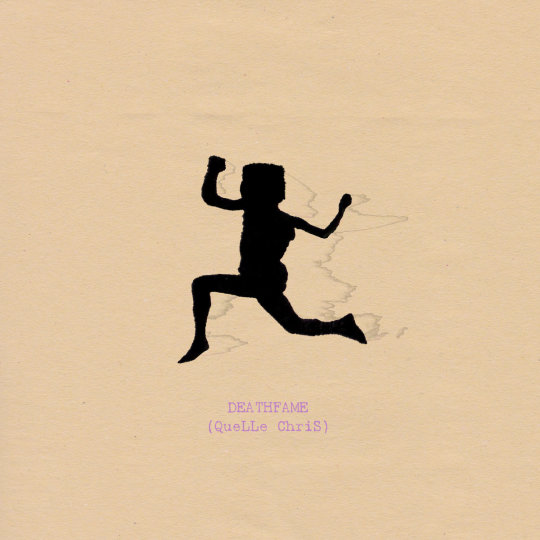
Quelle Chris - DEATHFAME (Mello Music Group)
On the surface, if albums like Everything’s Fine and Guns put Detroit rapper Quelle Chris on the map, DEATHFAME seems more casually great. That’s because it’s also his most reflective, one that considers his place with in the rap game and the pros and cons of success. Throughout the record, he mourns the music industry’s exploitative tendency to capitalize on rappers’ talents after they’ve passed away. “You can keep your feast and wine / I just want my peace of mind,” he raps on the soulful and slow “Alive Ain’t Always Living”. The atonal production mirrors Chris’ unease and mixed feelings towards a career in rap as he grows older, like the music box creepiness of the title track and the metallic drums and synth loops of “Excuse My Back”. Because Chris’ delivery is laid back and his words verbose, he’s often pigeonholed with conscious rap, something he addresses on highlight “King In Black”: “Listing me next to these Yo Gabba Gabba emcess / And these old stone age-ass ‘yabba-dabba’ emcees.” (Funny enough, with his different vocal inflections, Chris reminds me of the late, great MF Doom multiple times throughout DEATHFAME, an ironic twist considering the album’s main concerns.) Still, from his words of wisdom on “So Tired You Can’t Stop Dreaming” (“If heaven’s got a ghetto, hell’s got a resort”) to his remarkable vocal about-face on depressive piano ballad “How Could You Love Something Like Me?”, Chris proves once again that with his versatility and talent, he very well shouldn’t be taken for granted while he’s still here to bless us with his rhymes. - JM
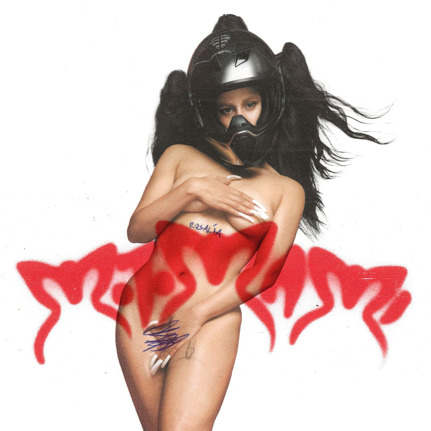
Rosalia - MOTOMAMI (Columbia)
“‘La ambición, delirio de grandez’ sings Rosalía on a cover of Justo Betancourt’s ‘Delirio de Grandeza”’ from her incredible third album MOTOMAMI. Meaning ‘Ambition, delusions of grandeur”’ in English, the phrase is appropriate for a song on an album full of similarly wild ones. To Rosalía, delusions of grandeur and ambition are one in the same, all part of a constantly transformational aesthetic. The Spanish folkloric singer-songwriter turned pop star, a woman who has been charged with appropriating Romani culture with her remixed flamenco, has actually done her research and then some. On MOTOMAMI, she fully delves into a further cultural melting pot. Jazz rubs elbows with reggaetón. Bachata, propulsive champeta, and dembow songs are triple decker sandwiched between Burial-sampling electronica, piano ballads, and deconstructed club music. When she throws in a sample of ‘Delirious’ by Vistoso Bosses and Soulja Boy at the end of ‘DELIRIO DE GRANDEZA’, you can’t imagine the original tune without it.”
Read the rest of our review here.
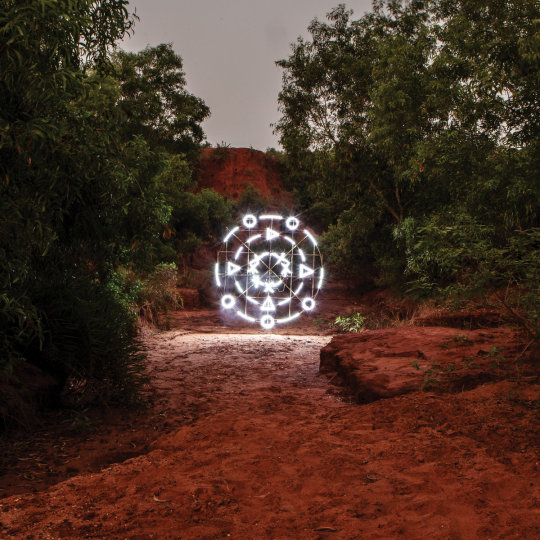
Sarathy Korwar - Kalak (The Leaf Label)
London-based drummer, composer, and producer Sarathy Korwar, the mind behind such inspired jazz fusion records like Day To Day and More Arriving, has released his self-described Indo-futurist manifesto, and perhaps his magnum opus. Based on a rhythm and symbol he projected on the walls during recording that was the basis for improvisation, Kalak is a percussive, circular album that puts you in a trance. With often-wordless vocals, rhythmic woodwinds, deep bass drums, and zippy synths, Korwar and his band bridge the gap between Indian classical music and Western dance. “Utopia Is A Colonial Project” is a skittering rave-up. “Back In The Day, Things Were Not Always Simpler” loops vocals from Noni-Mouse with wobbly instrumentals and shruti boxes, like an acid house drum raga. “Remember Begum Rokheya”, dedicated to the Bengali feminist author, sides Magnus Mehta’s hand-claps with saxophone lines and chanted vocals in polyrhythmic harmony, complex in structure but clear in feeling. As Kalak thumps and shuffles along, Korwar’s tablas and drumming in general constantly remind us where the music comes from. - JM

S.G. Goodman - Teeth Marks (Verve Forecast)
S.G. Goodman continues to explore the intersections of love, life, and survival in southern small towns, and does so on Teeth Marks in such vivid detail. The intimacy of her storytelling brings each track into a clear picture, the specificity working in tandem with universal feelings. It surfaces immediately in the title track through the lasting mark of a bite, sweet or sinister. One of my favorite moments of the album is around the midpoint, when the ghostly acapella of “You Were Someone I Loved” rolls seamlessly into the slinky fire of “Work Until I Die”. The latter simmers, providing a beat to groove to while damning the culture of work that only feeds a “company’s holy name”. - LL

Soul Glo - Diaspora Problems (Epitaph)
“The album is chock full of existential weight; as a Black person suffering from sometimes debilitating mental illness, Jordan thinks about death a lot, referencing both state-sanctioned violence and suicidal ideation. The idea that his music might never come out, or come out posthumously in a way that the white hegemonic music industry can profit off of it, is a frighteningly real one. It makes Diaspora Problems a difficult, but ultimately essential and especially urgent listen.”
Read the rest of our review here.

Special Interest - Endure (Rough Trade)
Shedding some of the musical ferocity of their last album, Special Interest’s Endure captures the same energy and push against capitalism and corruption with pop, disco, and house flourishes. Endure’s songs make you want to both strut and smash something, harnessing the power in both actions. Vocalist Alli Logout makes it clear on the stunning “(Herman’s) House”: “No question, the solution / Always the same conclusion / Burn it down to build it again”. - LL

Sudan Archives - Natural Brown Prom Queen (Stones Throw)
“Natural Brown Prom Queen, the incredible second album from R&B singer-songwriter and violinist Sudan Archives, is a remarkably loose affair. Brittney Denise Parks is able to achieve the same level of academic thoughtfulness she did on her stunning debut Athena while expanding her sonic personality and avoiding definition. The songs on Natural Brown Prom Queen are often brief, dense layers of sound and feeling.”
Read the rest of our review of Sudan Archives’ live stream from earlier this year.

SZA - SOS (Top Dawg Entertainment/RCA)
“Sure, there are moments of bleakness on SOS, like on ‘Used’, where SZA shares she’s essentially used to feeling used, the amount of death she’s experienced in her personal life and witnessed along with the world making her numb to exploitation. When she sings, ‘My pussy precedes me,’ on ‘Blind’, it’s a flex, but it’s also delivered with a sigh, as if this is all that there is. But the more she lets her voice soar, the closer she gets to self-acceptance, if not self-actualization. She bends around the skitter of the hi hats and the whirring synths on the subtly thrilling ‘Notice Me’. Her flow is better than it’s ever been on ‘Blind’; the pitch-shifted melisma of the title in the chorus sounds like she’s traversing the page as well as the scales, showing what she can be in one fell swoop. Most impressive is how effortlessly SZA fronts rock instrumentals, whether the pop punk bursts of ‘F2F’ or the ‘Fade Into You’-esque strumming of ‘Nobody Gets Me’.”
Read the rest of our review here.

Tanya Tagaq - Tongues (Six Shooter)
“You can’t have our tongues,” declares Canadian Inuk throat singer Tanya Tagaq on the title track to Tongues, her most fully realized album to date. Produced by Saul Williams and mixed by Gonjasufi, its uncomfortable atonal instrumentals--synth hues, pummeling drums, pulsating bass, unraveling strings--match the ferocity and intensity of Tagaq’s words. The record centers around the legacy of residential schools and the violence of colonialism in the past and the present; in context of Canadian authorities’ repeated discoveries of unmarked graves of Indigenous children at the site of these schools, Tongues is sadly prescient and ever-relevant. When Tagaq sings, “You can’t have our tongues,” she’s talking about bodily autonomy and her desire to reclaim the Inuktitut language for herself and her community. As someone who attended a residential school and was the victim of abuse, Tagaq uses Tongues as both a personal journey, touching on themes of trauma, self-love, and self-forgiveness, and a paean to the strength of the Inuk people. “Eat your morals,” she directs at white vegans who call out Indigenous people for eating meat on “In Me”. On “Colonizer”, her vocal intonations are looped as if they’re all-encompassing; “Oh, you’re guilty,” she sings sweetly, lulling the listener in before making you realize she’s talking about present-day Canadians, too. “Touch my children / And my teeth welcome your windpipe,” she shudders on industrial techno jam “Teeth Agape”, a rebuke of the contemporary day foster care system that’s essentially an extension of residential schools. And the emotional climax of Tongues is also its sweetest song, “Earth Monster”, written for her daughter Naia over 10 years ago but not recorded till now. The song reclaims the idea of monstrosity as both loving tenderly while remaining ready to fight, a concise encapsulation of Tagaq’s essential ethos. - JM

The Wonder Years - The Hum Goes On Forever (Hopeless)
There’s a reason The Wonder Years have endured and built such a devoted audience, and part of that is due to the lyrics of Dan Campbell. The Hum Goes on Forever is what happens when the pop punk genre grows with its band. Tackling new fatherhood and the world shift that is your thirties, Hum provides the familiarity of massive choruses with lyrics that continue to explore the depths of depression, love, and ultimately hope. “I’ve never been so afraid of failing at anything,” Campbell sings on “Wyatt’s Song”, a song for his son. “Well, I’m gonna go, start to dig, plant the seed, keep the birds away / Gonna grow you a place safer than this.” This theme of not just being a first-time parent but of looking towards the light in the dark runs through the entire album. It surfaces again in a lovely parallel on “Laura & the Beehive”, an ode to his grandmother and parental figures everywhere, perfectly capturing an image of unconditional love in only a few minutes. Pop punk can be a tricky genre, but there’s a reason The Wonder Years have continued to succeed. - LL

Tomberlin - i don't know who needs to hear this... (Saddle Creek)
Tomberlin’s latest album encapsulates the sound of change, of new beginnings and the constant questions that come with finding yourself. “I don’t know who needs to hear this,” she sings on the title track, “Sometimes it’s good to sing your feelings.” She displays the joy and hope that comes with self-discovery, and the delicate nature of the album’s sound reflects that. There is both a fragility and power in those moments, a gentleness we should allow ourselves, it seems to say. Tomberlin still beautifully tackles questions of the self, wrestling with relationships and the tenets of religion, but it feels lighter on IDKWNTHT, both in her voice and music. It’s less of a wrestle, perhaps, and more of a gentle contemplation. - LL

Various Artists - Summer of Soul (...Or When The Revolution Could Not Be Televised) [OST] (Legacy)
“If Questlove’s documentary is one of the best and arguably the most important concert film ever made, you could argue that its soundtrack is a worthwhile bonus. But as an accessible introduction to a once forgotten moment in cultural history, its widespread potential is nothing short of powerful, its aura nothing short of awe-inducing.”
Read the rest of our review here.
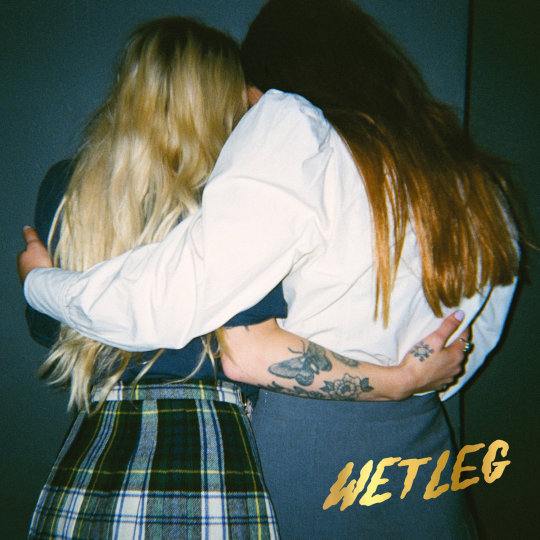
Wet Leg - Wet Leg (Domino)
“In fact, most of the songs on Wet Leg are more interesting than ‘Chaise Lounge’, as cheeky as it is. ‘Wet Dream’ is an immediate highlight, a tune based on Teasdale’s experiences of her ex texting her post-breakup telling her he was dreaming of her. Call-and-response cheerleader chants and limber, four-on-the-floor drums turn into a hilarious scene poking fun at softbois. ‘You climb onto the bonnet and you’re licking the windscreen / I’ve never seen anything so obscene,’ deadpans Teasdale. Drummer Henry Holmes’ backing vocals effectively make him the male character in this absurd nightmare. ‘Piece Of Shit’ is another aesthetic outlier, relatively speaking, a scraping loud-quiet-loud jam that sees Teasdale gnash her teeth at her ex. ‘You’re like a piece of shit,’ she states, before being unexpectedly literal: ‘You either sink or float.’ And then there’s closer ‘Too Late Now’, which perhaps hints at a new direction for the band, a dream pop beauty with echoing drums and tremolo hazy guitars.”
Read the rest of our review here.
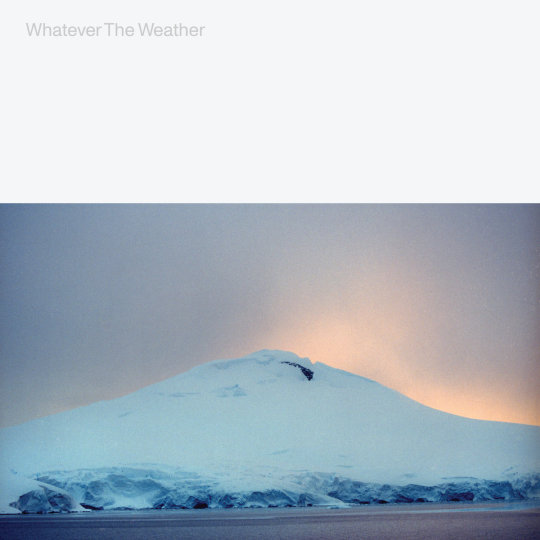
Whatever the Weather - Whatever the Weather (Ghostly International)
With albums like For You And I and Reflection, British producer Loraine James has proven to be one of the most exciting new IDM-adjacent artists of the past few years. In the spring of 2022, just in time with sudden shifts in temperature, James decided to debut her side project Whatever the Weather, emphasizing keyboard improvisation, vocal experimentation, and ambient textures over the club music she had mastered prior. Similar to the fickle nature of weather, the songs on Whatever the Weather--each titled to mirror a different literal temperature--abruptly change moods and approaches while reflecting on divergent influences. A lonely synth line and glacial techno beats comprise “0°C”, while “10°C” juxtaposes cold electric piano, layered on top of itself, with chirpy synths, almost like the sound of birds hatching after a long winter. “6°C” and “30°C” sport James’ clever emo inspiration, the twinkles on the former recalling cascading guitars on an American Football song, her vocals on the latter channeling the breathiness of Deftones’ Chino Moreno. And when the synths on “36°C” become wrapped in an overarching sense of melancholic summertime sadness, you can’t help but look back at the entirety of Whatever the Weather and remember that the outside world, like yourself, is ever-changing. -JM
#700 bliss#moor mother#bartees strange#beyonce#binker & moses#death cab for cutie#florist#immanuel wilkins#jeremiah chiu & marta sofia honer#kevin morby#lucrecia dalt#mary halvorson#matmos#the soft pink truth#muna#nilufer yanya#nina nastasia#nnamdi#oren ambarchi#quelle chris#rosalia#sarathy korwar#s.g. goodman#soul glo#special interest#sudan archives#sza#tanya tagaq#the wonder years#tomberlin
0 notes
Text
anyways in the spirit of guerilla labyrinths i'm gonna make a spiral labyrinth heart linocut and wheat paste it in this secret spot at the navy yards my poet friend told me about
8 notes
·
View notes
Quote
Someone looked at a tree and called it a tree. Someone else looked at a tree and called it whatever the word for tree is in Vietnamese, which I don’t remember anymore. And the word for that loss is too big to fit into a single word
Kien Lam, Guerilla Theory, in the Kenyon Review Online. Read it in full HERE.
2 notes
·
View notes
Video
youtube
Posting that romans song yesterday with the words of a Denis Davydov poem reminded me of this movie about Davydov’s role in Russia’s fight against Napoleon (it was called Squadron of Flying Hussars - Davydov was a Hussar who made them popular through his poetry.)
It’s a movie I loved as a kid and here is a song from it (once again the lyrics are a Davydov poem. It’s pretty accurate that he wasn’t a looker at all but so good at charming people through sheer talent and personality so this scene is A+)
Anyway, I wish someone would make a miniseries about his life now with modern cinematography and budget because the man had the kind of life you only see in boys’ adventure novels - hussar and officer, fighter against Napoleon (and pioneer of guerilla warfare), victor of a number of battles, adjutant to Bagration, famous poet, crazy love affairs etc etc.
My favorite of all the crazy Davydov stories is either one where he was transferred from hussars which meant he couldn’t keep the mustache he was proud of so he wrote a letter to Alexander I saying he couldn’t accept the order because of his mustache and Alexander I saying “oh well, then keep him as a hussar” or the one where when he first met Bagration, whose adjutant he was supposed to be, and Bagration brought up the fact that Davydov wrote a poem mocking Bagration’s nose, saying “this is the one who mocked my nose,” to which Davydov who always knew what to say, replied that it was merely out of envy because he himself almost had no nose (Davydov did have a tiny button nose.) Apparently he and Bagration got on like a house on fire and often when Bagration would be told the enemy is here, the Russian phrase for it “they are on the nose,” so Bagration would ask “whose nose, mine or Davydov’s? Because if mine we can have dinner first but if his we need to ride.” Heh.
9 notes
·
View notes
Text
Movie Review | Red Dawn (Milius, 1984)

When approaching work with politics that I don't share or are specific to its time, I try to picture how the original audience might have reacted. And for certain viewers in the Reagan era, the opening moments of Red Dawn would have been a vividly realized nightmare scenario, Soviet troops on American soil, killing Americans in cold blood or otherwise rounding them up for indoctrination. (Part of this includes playing Alexander Nevsky in the town's theatre, which doesn't sound so bad.) Juxtaposing the well armed, well trained invading force with small town Americana makes these dimensions feel more immediate, and while we know now that Gorbachev was eager to end the Cold War more than anything, the title cards lay out the events leading to the invasion with frightening plausibility. The Soviet Union, emboldened by the collapse of NATO and finding the U.S. with few allies, joins with sympathetic governments in Mexico and Cuba to launch a full scale invasion abetted with nuclear strikes, placing the film, despite its domestic setting, as a clear endorsement of hawkish foreign policy. (The specifics of the film's scenario are somewhat surreal to consider in a modern context, given how views across the spectrum have shifted over time, but I'll refrain from digging too much into modern real world politics.)
The Colorado setting is key to the film's visual strategy. The heroes, when framed against the majesty of the wilderness, look to be in an ad for a national park , while when we're with the villains, their environs bring to mind the mountains of Afghanistan. In the third act, when a counterinsurgency specialist akin to Colonel Mathieu from The Battle of Algiers is introduced, the heroes find themselves framed in the same harsh desert landscape as things go south for them. John Milius is making clear parallels with the Soviet invasion of Afghanistan, and as J. Hoberman points out in Make My Day, it's probably not a coincidence that "Wolverines" almost rhymes with "Mujahideen". Kevin Reynolds, who wrote the first draft of the screenplay, would push this dynamic further with The Beast of War, where we identify both with the othered Afghans and the technologically superior Soviet invading force, drawing parallels to the Vietnam War as well. Milius doesn't really push the latter idea as forcefully, although it's worth noting that the Soviets are seen mostly in the urban areas while being ambushed in the countryside. He also gives a rare moment of compassion to Ron O'Neal's Cuban colonel at the end, as if bonding with the heroes over a shared warrior's code despite being on opposite sides of the conflict.
When I'd first seen this movie a few years ago, I'd found it laughable and also kind of boring, but I'm now thinking my reaction was way off base. (On a related note, I've been using the extent to which my appreciation of certain movies has increased on recent rewatches as a measure of how long the pandemic has been going on. This is the most drastic case yet.) The most common complaint about the movie is that the likelihood of American teenagers successfully taking on the Soviet Army is far from plausible, but Milius is drawing clear parallels to successful real life defenses against better equipped and better trained forces. He also goes to some length to show them develop discipline and grow as a unit, an approach that he used behind the scenes as well, appointing Patrick Swayze as the leader of the other actors. (Swayze takes to the role well, embodying a kind of masculinity that goes well with Milius' warrior poet ideas.) There's a certain moment that I'd found unexpectedly cruel in my first viewing, but I think now the effect is pretty obviously intentional, at least from Reynold's original idea of the film as a Lord of the Flies scenario, confronting us with the ugliness of what happens when youths are forced into a life or death situation. The action is not directed stylishly or always with overt excitement, but I think it carries a real sense of strategy, shaped by Milius' knowledge of guerilla warfare. And the fact that it isn't too exciting also helps temper the film's jingoism. Milius treats the material with a certain romance, but he's also thoughtful about the consequences of war and the toll it takes on its participants.
Now is the movie dumb in certain ways? Yes, and one moment ("Aveeeenge me!") still plays quite laughably. Are its politics ones that I don't jive with? Yes, I'm not oblivious to the extent to which it plays as a paranoid right wing fantasy about sticking it to the Russkies, but I also think the movie is more thoughtful about those ideas and interrogates them with a bit more force than it's given credit for. I think it has in its young cast a number of nicely textured performances, and some very good ones from Ron O'Neal (speaking unsubtitled Spanish or Russian for the entire film) and Powers Boothe as a stranded Air Force pilot who bonds with one of the Wolverine girls. And I think it's rousingly scored by Basil Poledouris and bracingly directed by John Milius, who gives us images of startling impact and disarming poetry amidst the combat.
12 notes
·
View notes
Text

"Miner, poet, guerilla, tyrant - now what?"
"Autobot."
Working on our other captain, the tired old man that desparately needs a nap.
#tf idw#maccadam#mtmte#megatron#idw megatron#mtmte megatron#tf#transformers#idw#ifw tf#lost light#blender 3d#blender#b3d#3d art#3d artwork#3d artist#3d modeling
216 notes
·
View notes
Quote
Is it just me? Or is Tumblr basically the online equivalent of going out dancing at the goth club? Sure, at first, everybody seems all edgy and intimidating from afar, shuffling to and fro in the dark lights, like a bunch of sensual, unobtainable, art-school vampires. But then the next thing you know, its 1 am & you’re like, chit-chatting over some rails in the ladies room, scoring free body-glitter samples from goregous, glamazon mystics, getting invited to guerilla First-Friday exhibits by sexy, incised anarchists, and found a new MDMA connect with that sad-eyed poet you’d been eyeballing all night! And you just have that beautiful, momentary realization like, “Awww! My mutuals aren’t so scary after all!”
3 notes
·
View notes
Text
Notes on Kashmir history
The way I learned about the history of Kashmir was actually living there. I’d go to the bookstores and just read books there, so I don’t have an on-hand list of online resources. Also, people would tell me stuff, which I would then investigate or not. This is going to be almost entirely from memory, based on not-that-much research, and so it’ll have huge omissions and possibly errors simply because I do not know those things. The point of this isn’t so you can read this and call yourself an expert, it’s so you know what to ask for further questions. Also, if I do link to big books people won’t read them, but maybe they will read a post.
Kashmir’s history is contentious because hindus have made many attempts to recuperate its history in order to justify their settler colonialism. The hindu mythification of Kashmir is intense. So hindus will tell you a very different story about this than anyone else. Some articles on, for example, wikipedia, consult these hindu myths as real history. This is something to be aware of when doing independent research on Kashmir.
Kashmir is not a part of India, never has been, and never will be.
Islamification
As far as I know, Islam was first introduced to Kashmir by Mahmud of Ghazni in 1015, who did not make serious progress conquering it but did station some Muslims on the outskirts of the valley. Marco Polo (who traveled asia in the late 1200s) reports that the butcher castes in Kashmir were all Muslims. This is consistent with other evidence that Kashmir’s islamification took place over several centuries, and was a bottom-up affair; butchers are a low-caste group.
The first Muslim ruler of Kashmir was Rinchan (r. 1320-1323). He was an heir to a Buddhist dynasty, who considered a conversion into shaivism, which was a form of brahminism which had entered Kashmir somewhere around the time of Muhammad of Ghazni. However he was turned away from the brahmins who considered him to be low-caste. Brahmins at this time called Buddhism “the religion of the Shudras”.
Rinchan accepted Islam instead, and took the name Sadruddin Shah, under the tutelage of the Sufi missionary Bulbul Shah. The first mosque in Kashmir was a converted Buddhist temple which instututed a twice-daily charity meal. To this day, inter-dining between castes is still a really big deal in a lot of parts of India.
Throughout the late 1300s, Sufi missionaries were active throughout Kashmir including Ali Hamidani. Other important figures include Lal Ded, who was a Shaivite poet who has been disowned by Hindus due to her emphasis on social reform and embraced by Muslims for the same reason. Ded is said to have been incredibly influential to Nund Rishi, AKA Sheikh Nooruddin Noorani, who started the Rishi Sufi order, who were social renunciates who lived in caves and helped popularise Islam.
I can find almost nothing online about this subject. There is one story that I remember about Hamidani meeting Nund Rishi. In the story, the other sayyids warn Hamidani not to meet with Nund Rishi, because he is not a sayyid and had a very unorthodox practice. The point of the story is that Hamidani ignores this advice and with his help, Nund Rishi becomes one of the most important figures in the Islamification of Kashmir. I like the story, because it emphasises the importance of social equality in the spread of Islam throughout Kashmir.
Hamidani writes elsewhere, in Volume 10 of his Dhakhirat:
One feels proud of one's self on the basis of one's pedigree, in comparison to others who are better than he as regards to knowledge and action. He understands others as his slaves. His eyes are full of anger. And the signs of his malevolence are lucid in his actions. He can cure this disease, if he realises that it is foolish to understand others low on the basis of pedigree.
Hamidani’s Dhakhirat ul Mulk is still read from mosques in Kashmir to this day.
Dogra Empire (1846-1952)
Kashmir never came directly under British rule. They won it in a war against the Sikhs and immediately sold it to a petty tyrant named Gulab Singh who instituted an overt hindu theocracy, which was characterised by unreasonable taxation, arbitrary rules, etc. During this period the brahmins, predictably, enjoyed vast social and political privileges.
As it was explained to me by a Kashmiri friend of mine, an Englishman by the name of Robert Thorpe is considered by Kashmiris to be the “first martyr” of the freedom struggle. He documented the horrific circumstances that Kashmiris lived under and called for Kashmir to come under British rule. I have a copy of this PDF, you can probably find it online yourself if you look. The circumstances he describes are absolutely horrific and mirror . Some excerpts on this post: [x]
(Some of the above excerpts are from Arthur Brinckman, a missionary who documented the same thing around the same time. My pdf is a compilation of their two papers.)
Legend has it that Thorpe was assassinated by the Dogras shortly after publishing his paper, Cashmere Misgovernment.
After Thorpe’s death, there was a famine in which half to three fifths of the population of the valley died. Not a single brahmin died of starvation during this period. It is documented in more detail in the book Hindu Rulers, Muslim Subjects.
Property remained owned by the small hindu minority, who functioned as feudal lords stipulating various forms of untouchability which are common in India as well.
Partition and the Plebiscite
The British only directly controlled about 62% of British India. The rest consisted of Princely States.

The gist of this is that during partition, most of the petty monarchies unconditionally surrendered to, and were annexed by, India or Pakistan. One notable exception to this was Hyderabad, which was forcefully invaded by India which proceeded to slaughter tens to hundreds of thousands of people (estimates vary) because its ruler was Muslim, but it was geographically isolated from Pakistan.
I don’t want to dwell on Kashmir’s case here too much because I’m not that familiar with it. I don’t personally care about the history or the legal arguments. I’ve been to Kashmir and it is manifestly obvious that Kashmir is not and should not be a part of India. Not a single person in Kashmir wants anything to do with India. When you say something to the effect that Kashmir will be free in Kashmir, everyone stops what they’re doing to say “inshallah”. It is not the unenthusiastic lackadaisical “inshallah” of the Arabs. It is an enthusiastic punctuation mark to whatever you just said, which comes powerfully from the gut, a prayer in its own right, as if to flag it as important in God’s inbox. Almost like how African-Americans can use “amen” sometimes.
Muslims in India are an outlaw class. As far as we are concerned, there is, properly speaking, no law. This is doubly so in Kashmir. If you walk around downtown Sirinagar, you’ll see a huge number of blind people and amputees, while most shops or pharmacies are raising money for charities for the blind. This is because the Indian army has a policy of shooting Kashmiri protesters in the eyes. It is not secret. The brutality of the Indian occupation is on full display. Most of the tourists to Kashmir are Indian and the brutality is part of the attraction.
So I don’t care whatever horseshit “laws” India rationalises its occupation with. India should fucking burn for what it’s done to Kashmir.
The short version of this story is, though, that Kashmir’s then-petty tyrant agreed to a temporary Indian presence contingent on an eventual plebiscite regarding whether Kashmir would go to India, Pakistan, or remain independent. Or something. I cannot stress how little I care about this.
The fact that a plebiscite was part of the original arrangement, though, does influence activism both in Kashmir and India as well as Pakistan. Pakistan, for its part, has agreed to a plebiscite in Pakistan-Administered Kashmir (PAK) as soon as India allows it to happen in IOK.
Jammu, which is a city south of the Kashmir valley proper, saw the worst violence of the partition, worse even than the annexation of Hyderabad (though, again, estimates vary in both cases and it could go either way). Unlike the case of Hyderabad, the violence in Jammu was organised by Hindu supremacist groups including RSS, the political arm of which is the current ruling party of India, the BJP. After the violence, Jammu has gone from being Muslim-majority at time of partition to 7.1% Muslim at the time of the 2011 census.
Indian Rule
I am also not too familiar with anything here up until the 90′s or so. One important figure to know here is Maqbool Bhatt, a charismatic revolutionary who co-founded the Jammu Kashmir Liberation Front. He was a guerilla organiser who crossed the line of control into Pakistan “illegally” several times in order to work towards an independent Kashmir.
One event that gets disproportionate attention is the exodus of the brahmins from Kashmir. The early 90s were the start of the current insurgency, and political assassinations were carried out against people like local administrators and other active collaborators with the Indian colonial regime. brahmins were disproportionately represented among these people, because duh of course they were. But Muslim collaborators were targeted by these groups just the same. While the number of brahmins to be killed during this period was about 2-300, thousands of Kashmiris were killed by the colonial state which of course did target Muslims exclusively.
Some, not all, brahmins left Kashmir during this period. A few remain in Sirinagar, they own shops and stuff, I bought a pencil from one. They were never numerous because brahmins are never numerous. Since then, though they for their part mostly do not want to return and are well provided for in India and the western diaspora, Much of India’s current campaign of settler colonialism is rationalised as an effort to resttle them in Kashmir. The argument falls apart, however, as they themselves have no such agenda. If they really wanted to go back, they would just go back. They do not face communal violence. In addition, India has never made such an effort to resettle victims of real pogroms, like the Bombay Riots or the Delhi Pogrom earlier this year.
In response to this insurgency, the Indian government began to heavily promote a “pilgrimage” to the Amarnath cave as a tourist attraction. The Amarnath "pilgrims” are the worst and most obnoxious people I have ever met in my entire life. They are drunken (in a place that is 97% Muslim where alcohol is illegal, in full view of the heaviest military occupation in the world), obnoxious, light firecrackers (in a fucking warzone where a Muslim would be killed for it), disrespect the property of the people they stay with, etc.
Since 5 August 2019, there has been no internet in Kashmir and all industry has been shut down. Real journalism is impossible and press and TV media are nothing but mouthpieces for BJP. At first this was rationalised by a false-flag discovery of weapons outside the “pilgrimage” route, because all terrorists like to bury their weapons in the ground outside of where they plan to use them, for convenience, like squirrels hiding acorns for the winter. India quickly dropped this pretense and just maintains an “everything is normal” line now, although there has been no internet or economic activity for over a year and schools have been converted to military bases while the environment is destroyed (not even for “development” purposes, think USA and the buffalo).
At the same day of the internet shutdown important parts of the Indian constitution were repealed which allow Kashmir to maintain some semblence of autonomy with an aim towards implementing a settler-colonial West Bank model; various things have been proposed to the effect of Hindu settlements guarded by the military and this is all completely brazen and open while the colonial administration has started granting residence to non-Kashmiri migrant workers.
Migrant workers have not faced legal discrimination; the only implications of this are that they can now own property in the Valley and vote in local elections. There is a similar statute in the neighbouring Indian state of Himachal Pradesh where only Paharis are allowed to own property or businesses, despite most of them actually in practice being run by Kashmiri and Tibetan refugees. In Kashmir there is no such contradiction. Businesses are Kashmiri-owned, Kashmiri-run.
This is with an eye to demographic change in the valley by way of which Indian rule can be legitimised through the above-mentioned plebiscite. Again this is all completely in the open, though supplemented with “what about the Kashmiri pandits!!!!” wailing. Pandit is another word for brahmin.
The militants are not bad guys. The people of Kashmir do not fear them and in fact pray for their success. The funerals of martyrs are very well-attended and before the current blockate, India used to shut down the internet on the days of their martyrdom anniversaries. Local people graffiti their names on walls and name streets after them.
The movement for a free Kashmir is an uncomplicated freedom struggle against a brutal military occupation.
See also: Understanding the Indian Occupation of Kashmir
9 notes
·
View notes